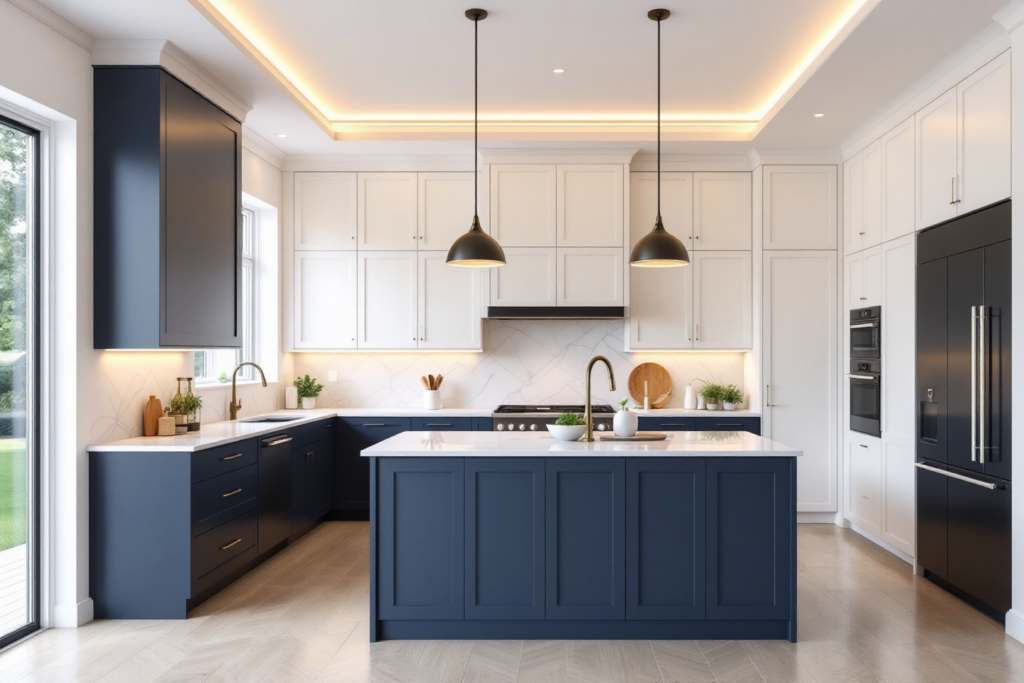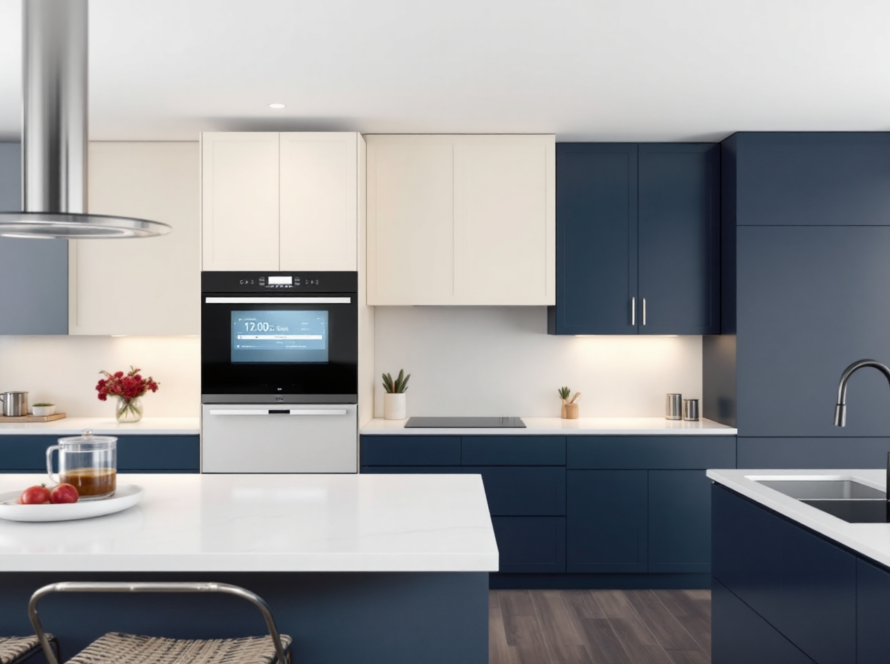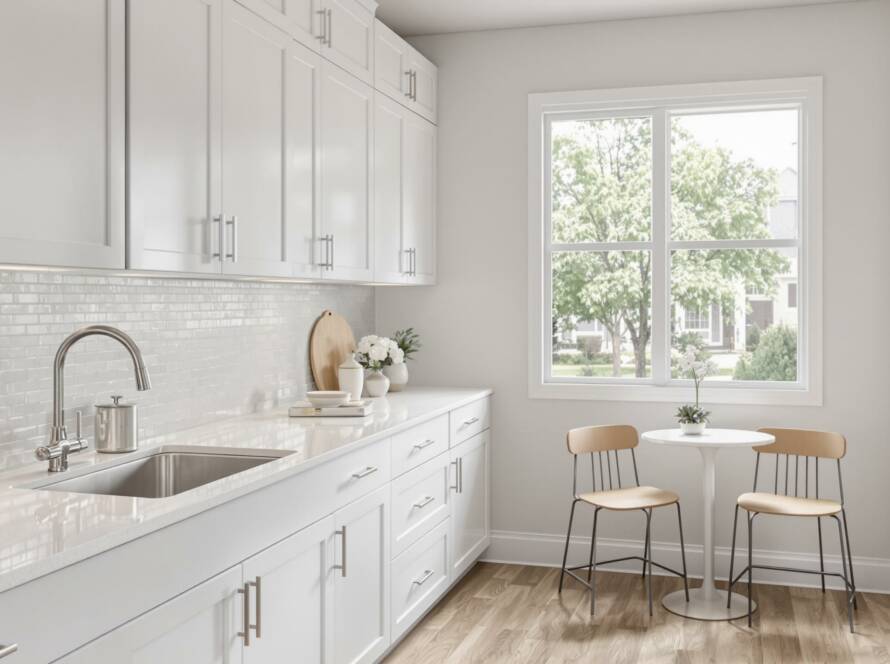Let’s be real—kitchen lighting is often an afterthought in home design. But it shouldn’t be. This space is the heart of the home, where everything from midnight snacks to holiday feasts happens. And if your lighting isn’t pulling its weight, you’re not just missing ambiance—you’re sacrificing function.
A well-lit kitchen isn’t just about visibility; it’s about creating zones for cooking, dining, entertaining, and relaxing. Whether you’re doing a full remodel or just swapping out fixtures, the right kitchen lighting plan can transform your space. Let’s dive into the essentials—from layout strategies to bulb choices—so your kitchen looks as good as the meals coming out of it.
TLDR – Quick Guide
- Use layers: Combine ambient, task, and accent lighting for a dynamic space.
- Prioritize task lighting: Ensure work zones like counters and stoves are well lit.
- Think beyond overheads: Pendants, under-cabinet strips, and recessed lights are your best friends.
- Consider bulbs: Warm white (2700K–3000K) for cozy vibes, daylight (4000K+) for precision tasks.
- Go smart: Dimmers and smart bulbs give you full control over your kitchen’s mood.
Implementation Tactics
1. Understand the Three Main Types of Kitchen Lighting
Ambient Lighting
This is your room’s overall light source. Think ceiling-mounted fixtures, recessed lights, or large pendants. They fill the space with light, making it safe and usable.
Task Lighting
These are focused lights that help you chop onions without nicking your fingers. Under-cabinet LED strips, pendant lights over islands, and focused spotlights fall into this category.
Accent Lighting
For style points and showcasing features like open shelving or artwork. Think toe-kick lighting under cabinets or inside glass-front cabinets.
2. Plan Lighting for Kitchen Zones
- Island: A trio of pendant lights or a statement chandelier adds function and flair.
- Counters: Under-cabinet LEDs ensure you don’t cut in the dark.
- Sink Area: A spotlight or small pendant does wonders here.
- Pantry/Nooks: Motion-activated lights = game changer.
Pro tip: Use this kitchen lighting calculator to figure out how many lumens you’ll need per area.
3. Choose the Right Color Temperature and CRI
- Warm white (2700K–3000K): Ideal for cozy evening meals or entertaining.
- Cool white (3500K–4100K): Best for prep zones and morning energy.
- Daylight (5000K–6500K): Great for detailed tasks, but can feel stark if overdone.
Aim for a Color Rendering Index (CRI) above 80 so your food and finishes look vibrant and true-to-color.
4. Match Fixtures to Style and Scale
- Industrial pendants for modern spaces
- Glass or chrome for sleek, minimalist kitchens
- Farmhouse vibes? Go with matte black or oil-rubbed bronze
And remember: size matters. A 10-foot-long island doesn’t want two tiny lights—it wants presence.
5. Smart Features and Energy Efficiency
- Smart bulbs: Set moods or schedules via voice control or app
- Dimmers: Essential for changing ambiance between cooking and hosting
- LEDs: They use up to 75% less energy and last 25x longer than incandescents (Energy.gov)
Bonus: Energy-efficient homes can even boost resale value, according to Zillow.
Key Takeaways
- A great kitchen lighting plan includes ambient, task, and accent layers.
- Zone-based planning ensures function and comfort.
- Pay attention to bulb temperature and CRI to flatter food and finishes.
- Choose fixtures that match your kitchen’s style and size.
- Smart lighting and LEDs are the future—save energy without sacrificing looks.
FAQs
1. What is the best lighting for a kitchen?
Layered lighting is best—combine ambient, task, and accent lighting for maximum flexibility and function.
2. How many lights should be in a kitchen?
This depends on size and layout. A good rule: 1 general light per 4–6 square feet, with additional lights for task areas.
3. Are LED lights good for kitchens?
Yes! LEDs are energy-efficient, long-lasting, and come in many color temperatures suitable for every kitchen zone.
4. Where should under-cabinet lights be placed?
Position them toward the front edge of cabinets to avoid dark shadows on the counter.
5. What color temperature is best for kitchen lighting?
2700K–3000K for ambient warmth, 3500K+ for tasks. Balance both depending on your lifestyle and kitchen use.



